Last Updated on June 20, 2024
Confession time: I used to be a shopaholic. At one point I had over 200 dresses alone in my closet.
I had a lot of vintage clothing. That includes dresses from the 40s, 60s, and 70s. I could immediately jump into any decade or any personality I was feeling whether that was preppy, rocker, or boho. It was like dress up for me.

But, while I still love clothing, I’ve really learned to listen to the styles that make me feel the best. And that meant really analyzing my closet and donating pieces that just didn’t suit me anymore.
I’ve since switched to a more minimalist approach to fashion. Minimalist clothing is a style that emphasizes simplicity, functionality, and elegance.
Sticking to minimalist clothing is of course beneficial to the environment too. After all, there are enough clothes on the planet right now to dress the next six generations of humanity.
We don’t need more cheap clothing that rips after a few wears; we need more durable built-to-last pieces that become wardrobe staples we can rely on.
Thing is, there’s a difference between minimalist mindset versus minimalist aesthetic in terms of fashion. We’ll talk more about that later, but surmise it to say, you don’t need to wear all black and white to have minimalist clothing.
Minimalist clothing, for me, is about fine tuning your personal style. It’s going with pieces that match your body shape, skin tone, and make you happier overall.
Two ways to home in on this are to study up on color analysis and kibbe body types. You can take tests that will help you better understand which colors complement your skin tone best, and how to dress to best complement your body’s shape.
Here’s how to choose minimalist clothing and build a sustainable capsule wardrobe you will feel great in, without harming the planet.

what clothes should a minimalist have?
There’s no magic number of clothes a minimalist should have, or any set rules. There’s also no specific brands you need to own to have a “minimalist” wardrobe.
In the past, I’ve done an 18 piece wardrobe experiment. Yes, it’s exactly what it sounds like: I picked out 18 pieces of clothing to wear for the entire year.
I made it about 8 months before throwing in the towel. I just couldn’t handle it. At first, I loved it. By the third month, I was tired of it. By the sixth month, the clothes needed to be repaired.
This approach can be a bit extreme. I think it can be empowering to some, but not necessarily for everyone.
Instead of focusing on a specific number, I think it is a good idea to choose pieces that you truly love and know will be worn again and again.
Minimalist clothing doesn’t have to be boring or monotone. It just means choosing pieces that can be mixed and matched, have versatility, and will be reworn often. Even just playing with different textures can make all the difference!
Fine-tuning your style is a big part of curating a minimalist wardrobe. Here are some ways I’ve defined my personal style over the years.
color analysis
Getting a color analysis is a great way to assess which colors to keep in your closet. I went to see Donna Fujii and left with a swatch book of shades that look best for my coloring. It was such a fun experience that helped me narrow down the colors to blush pink, navy blue, baby blue and wine red.
It turns out my color palette is a true summer. These entail cool, muted colors, like soft grey-blues, grey-violet and blue-purple tones.
Depending on your complexion, certain colors may clash or make you glow. I’d aim for 4-5 colors that flatter you for the sake of simplicity.
kibbe body type
Knowing your kibbe body type can also help you better define what clothing lines best suit your frame. There are 13 different kibbe body types and mine is considered Soft Classic.
The Soft Classic body type is defined by a blended balance between yin and yang, leaning slightly more towards yin. Therefore, it’s recommended my clothing lines should be clean, unbroken, and symmetrical, with waist emphasis. Aiming for smooth, soft, symmetrical silhouettes with slight shaping will compliment my body best.
I’m pear shaped which means that my hips are larger than my bust. I also have a small waist, so accentuating it with clothing is ideal. Shapeless clothing does nothing for me.

how to curate a minimalist wardrobe
step 1
Place all your clothes onto your bed and create 3 piles: Love, no and maybe.
The love pile: Clothes you absolutely adore and cannot part with
No pile: Clothes you definitely don’t want anymore, or just feel you’ve outgrown.
Maybe pile: Clothes you’re on the fence about.
step 2
Try on the clothes from your maybe pile to determine if you’ll keep them. Take a long hard look in the mirror, take photos, ask for opinions. Do whatever you have to do to decide if you truly love this piece or not.
Make sure to ask yourself if it came be hemmed or tailored first before getting rid of it. Sometimes, that’s all a piece needs to go from okay to awesome!
step 3
Whatever you don’t want anymore, responsibly get rid of through donating, selling, or gifting to your loved ones. Always check with loved ones first, as you will know exactly where your clothes are going. This increases the likelihood they’ll get re-worn!
A large portion of donated clothes typically aren’t suitable for someone else to wear because they are in poor condition. Those unwanted clothes can then become a problem if they get shipped overseas or worse, incinerated or landfilled.
It’s important to donate clothes to small, local thrift stores over big chains or random donation bins. Local churches and community clothing swaps and drives are also excellent places to donate used clothes in good condition.
RELATED: Textile Recycling Near Me: Where to Recycle Your Clothes

what does minimalist mean in clothing?
Minimalism in terms of clothing means not having a wardrobe jam packed with stuff you never even wear.
Feeling like you have nothing to wear, even though you have so many options to choose from, is the opposite of what a minimalist wardrobe is.
Instead, minimalist clothing should mean having a curated selection of clothing you keep coming back to. This can be an 18 piece wardrobe, or 100 pieces – as long as you are genuinely and frequently wearing every single piece and getting the most out of each one.
This doesn’t mean your wardrobe has to be bland or colorless either. Just that it has to be clothes you carefully assess, love wearing, and know you’ll rewear again.
For example, according to my color analysis session, one of my best colors is blue – so it makes sense to keep a good selection of blue clothes I adore in my wardrobe.
Observe which colors you find yourself reaching for the most, and which you avoid. This will help you better narrow down your wardrobe to pieces that better reflect your personal style, and flatter your skin tone.

how to style a minimalist outfit?
There are so many ways to style a minimalist outfit. Utilizing shoes, accessories like jewelry or bags, makeup, and hair can really elevate an outfit.
But before we get into that, it’s important we differentiate between minimalist the aesthetic and the mindset.
The aesthetic of minimalist clothing just refers to how your clothes look: Aka, no flashy designs, patterns or embellishments. It’s typically characterized by neutral colors, timeless silhouettes, and high-quality fabrics.
However, the mindset of minimalist clothing is about opposing trends and instead sticking to what’s recognizable. It’s dressing as a signature and fine-tuning your personal style. This mindset ensures there’s overall less clothes in your wardrobe and more quality pieces you love and use daily.
Having a minimalist mindset can truly help you refine your personal style and reduce overconsumption.
For instance, I wear my pearl earrings every day because when people see pearl earrings, I want them to think of me. Or a certain shade of blue I wear all the time, that people now associate that color with me. Having a signature scent or color – it’s so much more powerful than being trendy. It creates an instant sense of recognition.
To have a truly minimalist approach to clothing, you don’t need to dress in all black and white solid colors. You just need to have a curated selection of clothing you keep coming back to.
methods to help style clothes sustainably and mindfully:
- Home in on which colors you gravitate towards, and which complement your skin tone.
- What style of clothing makes you feel your best? Tailored and fitted clothes, or loose, drapey pieces? Discovering your body shape and kibbe body type can help you understand what style of clothes better suit you.
- Do you enjoy textured, thick fabrics? Sheer and soft fabrics? Something in between?
- Does gold or silver look better on you? What kind of jewelry do you gravitate toward most: Rings, necklaces, bracelets?
- Do you have any pieces that can help you layer and build off a base outfit, like cardigans, jackets, leggings and tights?
- Are you dressing for what you do? Sit down and write out what activities you normally participate in throughout the week so you can buy appropriate clothes for certain occasions. For example, 7x a week I’ll be working from home so my wardrobe primarily consists of jeans and sweaters.
- Learn how to play up and play down an outfit. For example, starting with a white crew neck t-shirt as the base, you can play it causal with a pair of jeans, a jacket, sunglasses, and a necklace. Or, you can play it up by pairing it with a denim mini skirt, bold accessories/makeup, and voluminous hair.
what is a minimalist brand?
A minimalist brand focuses on crafting high quality, timeless pieces that will quickly become staples in your wardrobe. These brands make products designed to last and don’t typically use cheap materials that can easily break or tear like polyester.
A minimalist brand may also choose to stick to neutral colors and patterns that aren’t loud. But plenty of minimalist brands still use color in their clothes. What matters is if the pieces can be styled in various ways, and worn on a consistent basis for years to come.
Here are a few sustainable, minimalist clothing brands that value the mindset over the aesthetic.

1. pact
- Clothing basics, underwear + socks for both men, women, kids, + babies
- Made from organic cotton which uses up to 95% less water than conventional cotton + no harsh chemicals
- All of their clothing is sweatshop and child-labor-free

2. everlane
- Women + men’s elevated basics, shoes + accessories
- Each factory they use must score a 90+ when it comes to fair wages, reasonable hours, + environment
- They use natural fabrics, have a no-new plastic pledge, and their drops have different initiatives like carbon-neutral sneakers, organic cotton tees, recycled materials + more

3. organic basics
- Women + men’s basics
- Made from organic, recycled + plant-based materials
- With every purchase they donate one percent of your order value to a charity of your choice
- 1% For The Planet member

4. mate the label
- Women, men’s + kids clothing
- Made from organic, GOTS certified materials
- Eliminated all plastic in their labels + packaging
- Woman-founded
- Climate Neutral
- B Corporation
- Clothing recycling program
What’s your favorite way to curate a minimalist wardrobe? Let me know in the comments!
The post Minimalist Clothing: Everything You Need to Know to Build a Mindful Wardrobe appeared first on Going Zero Waste.
Minimalist Clothing: Everything You Need to Know to Build a Mindful Wardrobe
Green Living
How Toad&Co’s Clothes Help Everyone Enjoy the Outdoors
This is a sponsored article about a brand that was independently assessed by our rigorous ratings system. We’re proud to only collaborate with “Good” and “Great” rated brands. Learn more.
US brand Toad&Co has a socially and environmentally responsible approach to clothing, creating pieces inspired by the outdoors and with a lower impact on the environment. Not to mention an enduring commitment to helping everyone get outdoors through its work with non-profits. Read on to discover the brand’s environment-first ethos.
Focusing on what matters most
“We make feel-good clothes for positive impact—fostering community around doing good, enjoying life’s simple pleasures, and embracing the unexpected,” says Sarah Palladino, director of people and impact at Toad&Co as she introduces the Californian brand. This “simple pleasures” concept applies to Toad&Co’s approach to design, too, and prioritises quality and responsibility over trend-led items. This, in turn, means the brand focuses its energy on clothes that are comfy and practical enough for everything from work to outdoor exploring, and on maintaining its ongoing commitments to using lower-impact materials, partnering with cleaner factories, and looking for new ways to do more with less.
Since day one, it’s been about more than just clothes. From choosing sustainable practices in every corner of our business to supporting programs that protect the planet and make the outdoors more accessible to everyone—knowing we stand for more is what keeps us going
Gordon Seabury – CEO at Toad&Co
Lower-impact materials and producer responsibility
Opting for lower impact materials is one of the core ways brands can address their impact on the planet: “Sustainable materials make a world of difference,” Toad&Co says. “We use organic cotton, recycled fibres, and other high-quality materials known for low-impact growing and cleaner manufacturing.”
The brand’s selection of more sustainable materials includes organic cotton, hemp, TENCEL Lyocell, and recycled fabrics like wool, cotton, and polyester. It also looks to third party clothing certifications like bluesign®, OEKO-TEX® STANDARD 100, and Global Organic Textile Standard, and it publishes its list of restricted substances for all to see.
Toad&Co also operates a resale platform, called ToadAgain, online and at its IRL store in Maine, US, to keep its clothes in the loop.
Supporting non-profits and access to the outdoors
Toad&Co donates 1% of its profits to organisations working to empower others and, in particular, enable better access to the outdoors for all.
In 1996, Toad&Co partnered with Search, Inc. to co-found the Planet Access Company, a full-functioning warehouse that trained and employed up to 70 adults with disabilities annually.
Determined not to stop at the front door, the brand also co-founded Search for Adventure in 2004, a unique travel program to facilitate vacations for adults with disabilities. Over 20 years later, the social venture partnership has evolved—and includes a flagship store in Chicago, a program called Visibility Arts that nurtures creativity through sharing Search, Inc. artist’s work, neurodiversity and disability awareness training, and an expanded Search for Adventure program. In 2024, the brand supported 147 nights of camping for adults with disabilities through the program.
We give back to—and partner with—organisations that align with our three pillars of giving: conservation for human enjoyment, equity and accessibility, and do the right thing
Sarah Palladino – director of people and impact at Toad&Co
One of Toad&Co’s key partnerships is with Brave Trails, which is dedicated to LGBTQ+ youth leadership, to support it in putting on accredited camps, mentorship programs, and meet-ups for LGBTQ+ youth.
Shop favourites from Toad&Co’s new collection
Read on to discover some of the standout items that balance style with practicality from Toad&Co’s lineup.
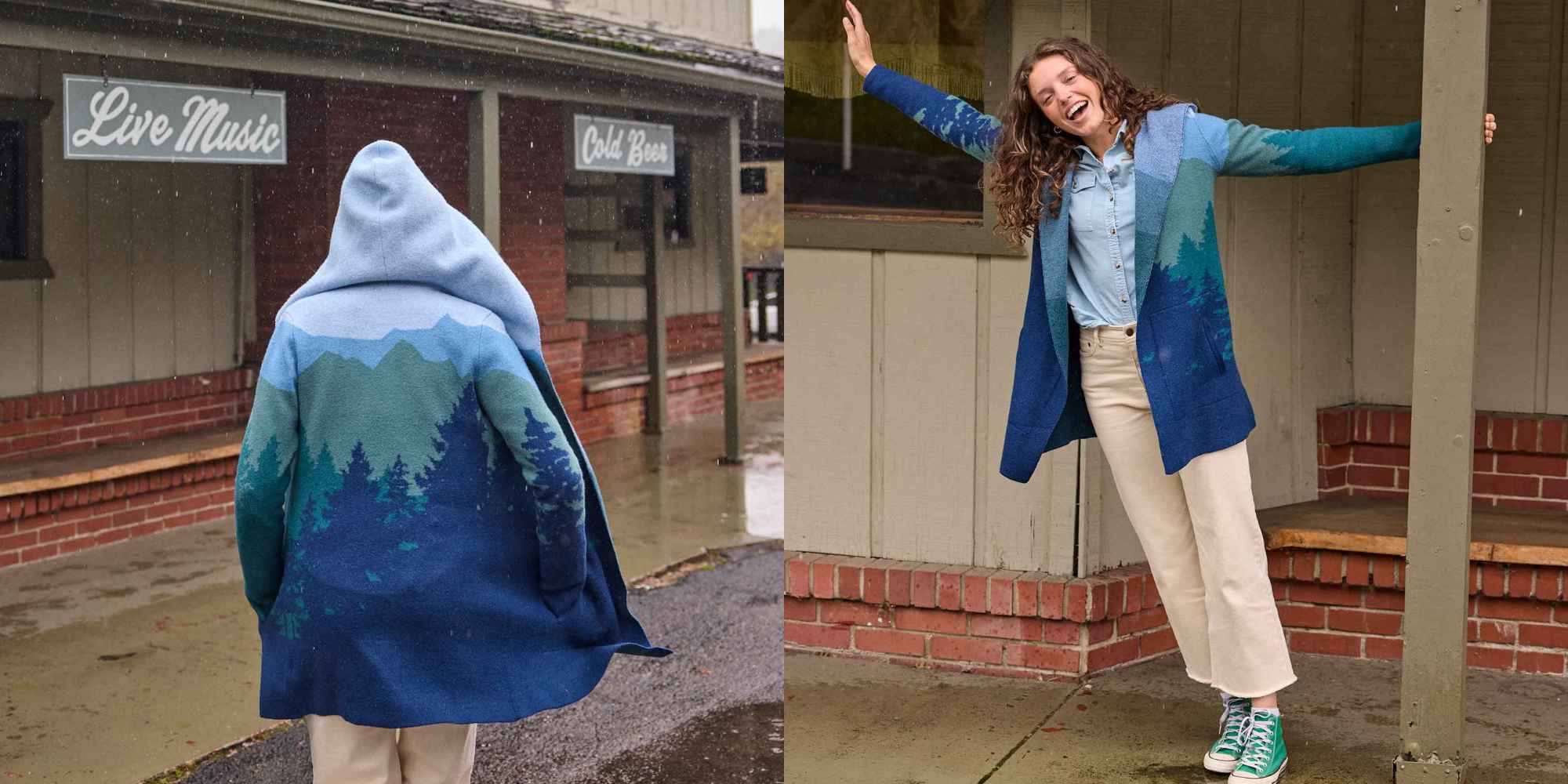
Woven with a beautiful alpine jacquard pattern, this hoodie is made from non-mulesed Merino wool and features pockets at the sides. It’s ideal as a mid-layer under a longer coat when you’re out exploring, or as a cosy item for grabbing a post-walk hot chocolate.
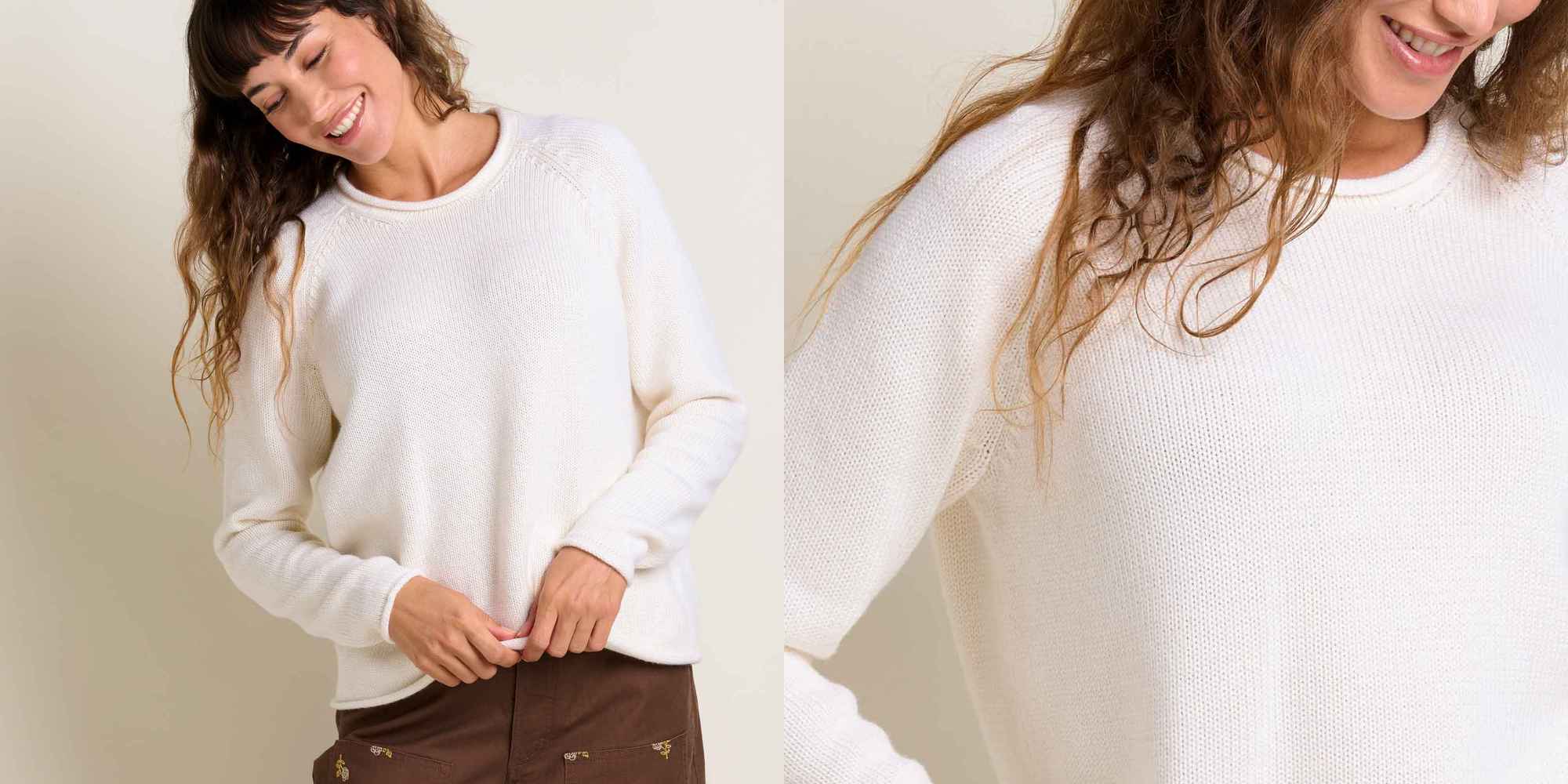
This Alpineglo sweater is a blend of 50% organic cotton and 50% non-mulesed Merino wool, so it’s going to help regulate your temperature in most climates. On top of that, the neutral tone and straight fit make it really versatile—you’ll be reaching for it on the regular.
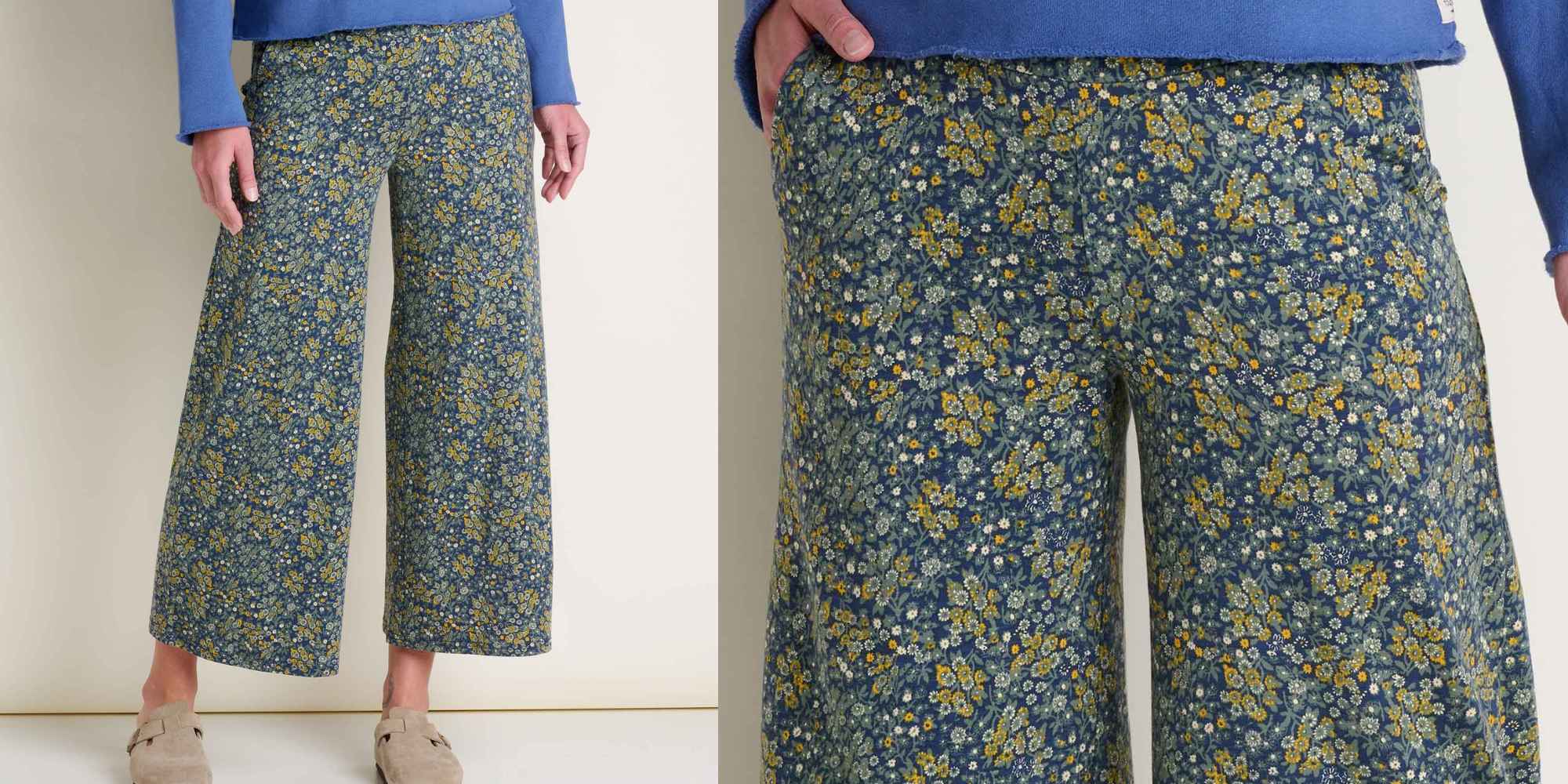
Toad&Co calls these cropped trousers “sweatpant comfortable, going-out presentable”, which makes sense, given they’re made with organic cotton and Tencel Lyocell for softness and have a comfortable wide waistband, not to mention a pretty floral pattern.
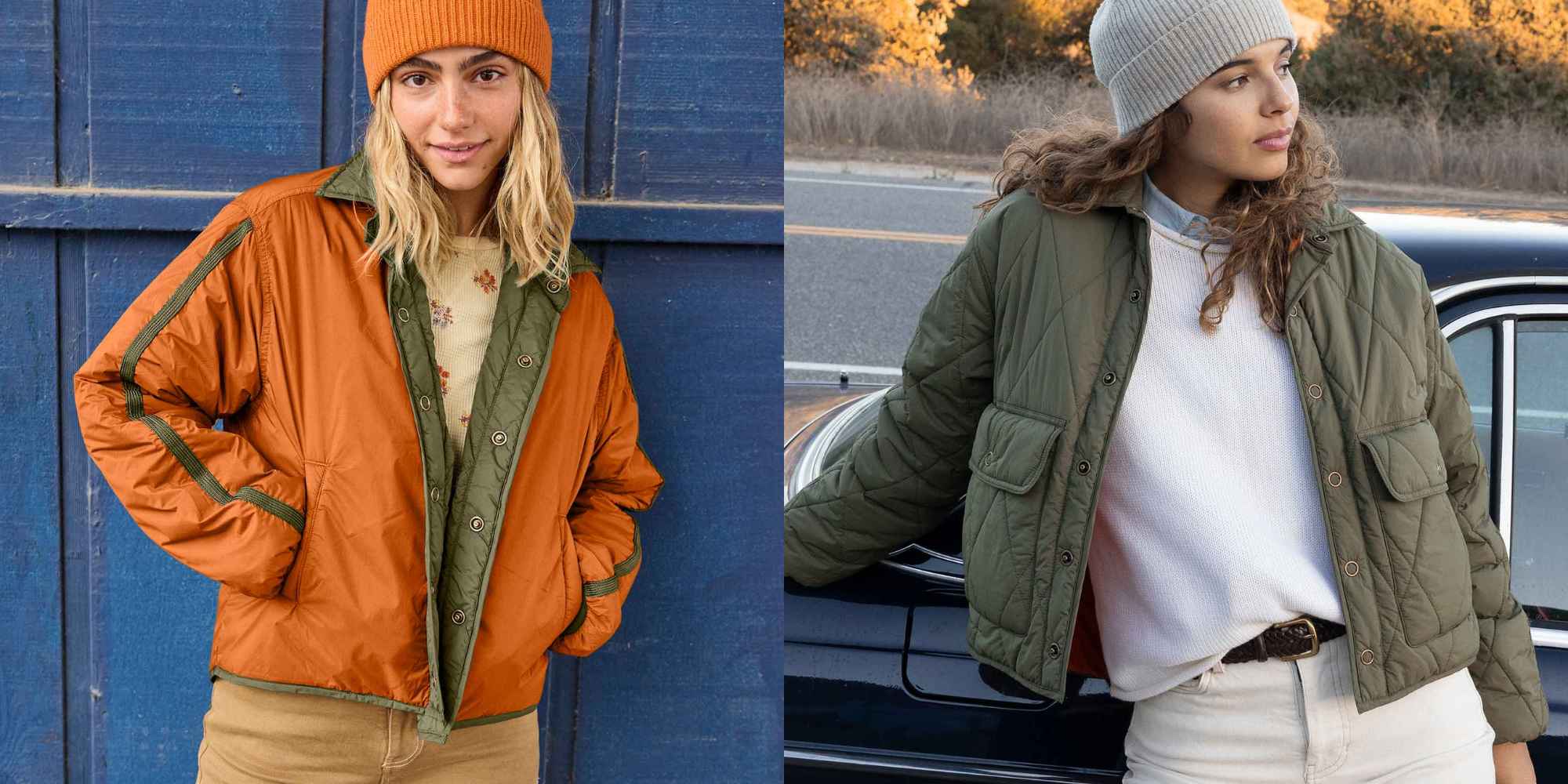
This Nomader jacket is reversible, packable, and water-resistant. In other words, it’s the ideal item to take with you for outdoor adventures. It’s made from recycled nylon and lightly quilted for warmth.
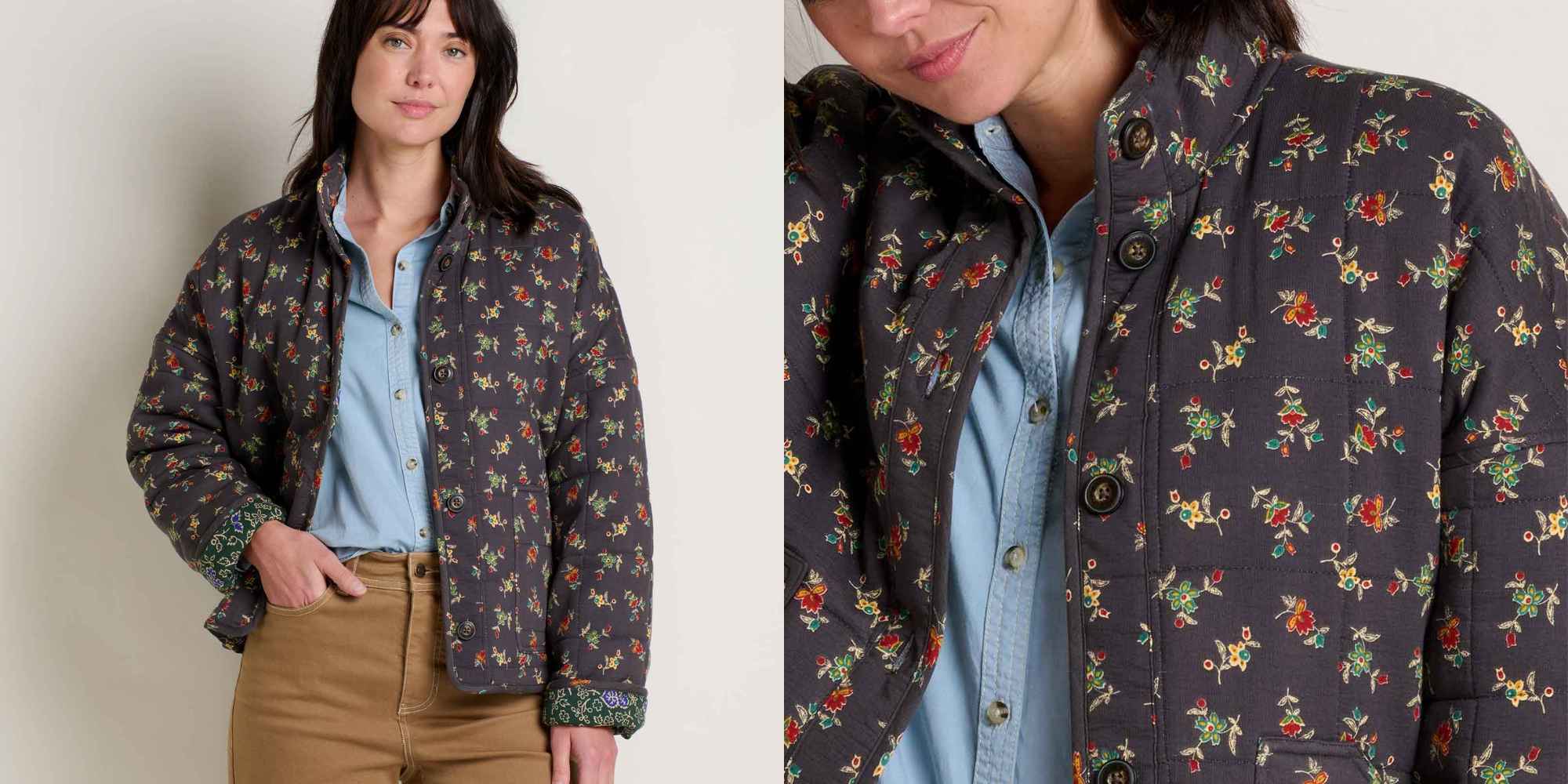
Toad&Co picked the crepe-like organic cotton for this jacket so that you could fold it away in a bag and have it still look presentable when you pull it out. It’s also packed with recycled polyester padding for extra warmth.
 Balsam Cutoff TrousersThese Balsam Trousers are made with a tiny bit of stretch and a special waistband for comfort, so they’ll flex with you and feel good all the time. The neutral brown colour also goes with so many options.
Balsam Cutoff TrousersThese Balsam Trousers are made with a tiny bit of stretch and a special waistband for comfort, so they’ll flex with you and feel good all the time. The neutral brown colour also goes with so many options.These Balsam Trousers are made with a tiny bit of stretch and a special waistband for comfort, so they’ll flex with you and feel good all the time. The neutral brown colour also goes with so many options.
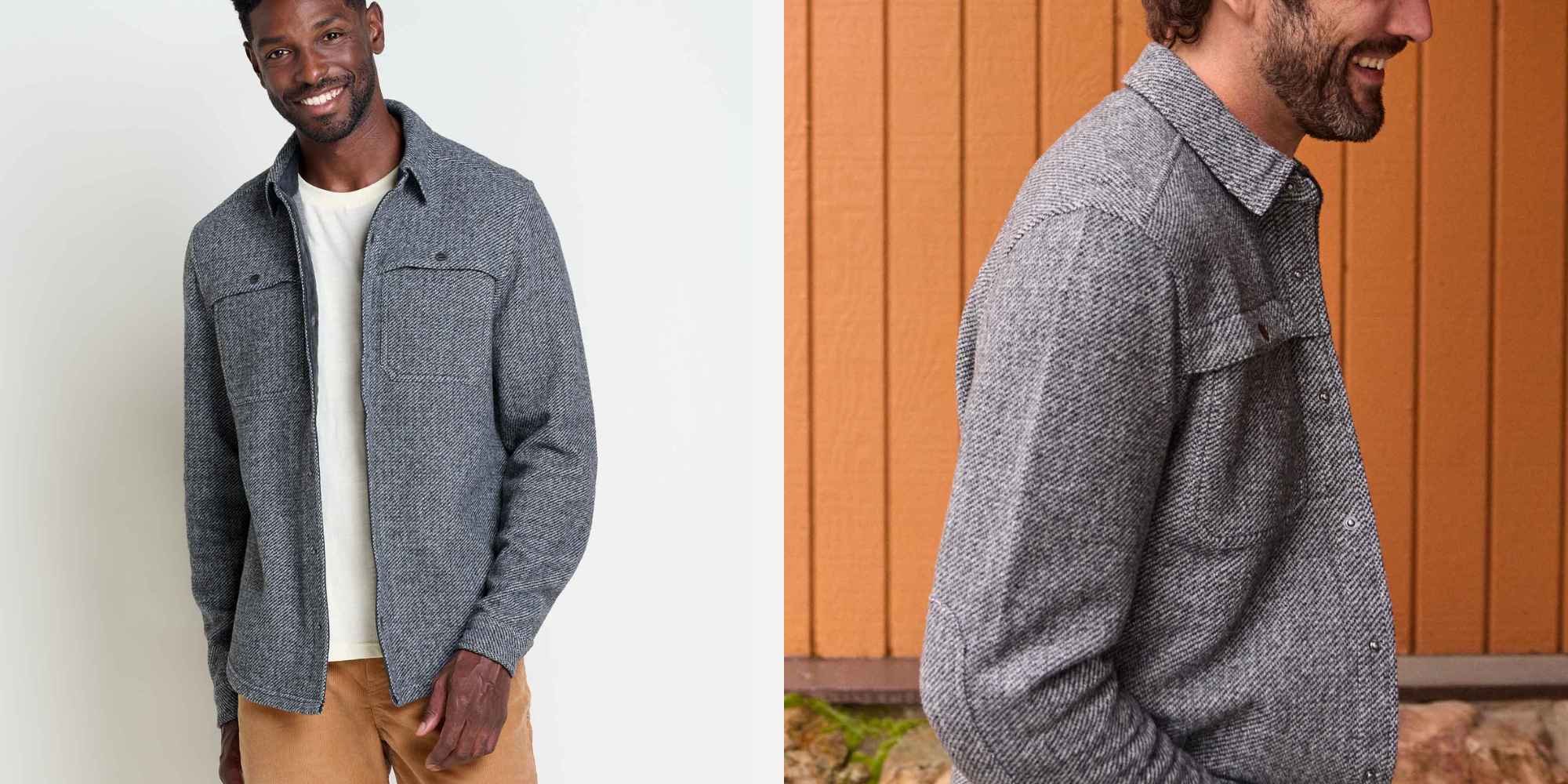
Going from a walk to dinner? From the office to drinks? This Kennicott shirt jacket fits the bill for all of the above. The smart twill fabric incorporates recycled Italian wool.

This is Toad&Co’s Re-Form Herringbone: a blend of recycled cotton and polyester that offers a soft drape and an attractive herringbone weave that looks smarter than the average checked shirt.
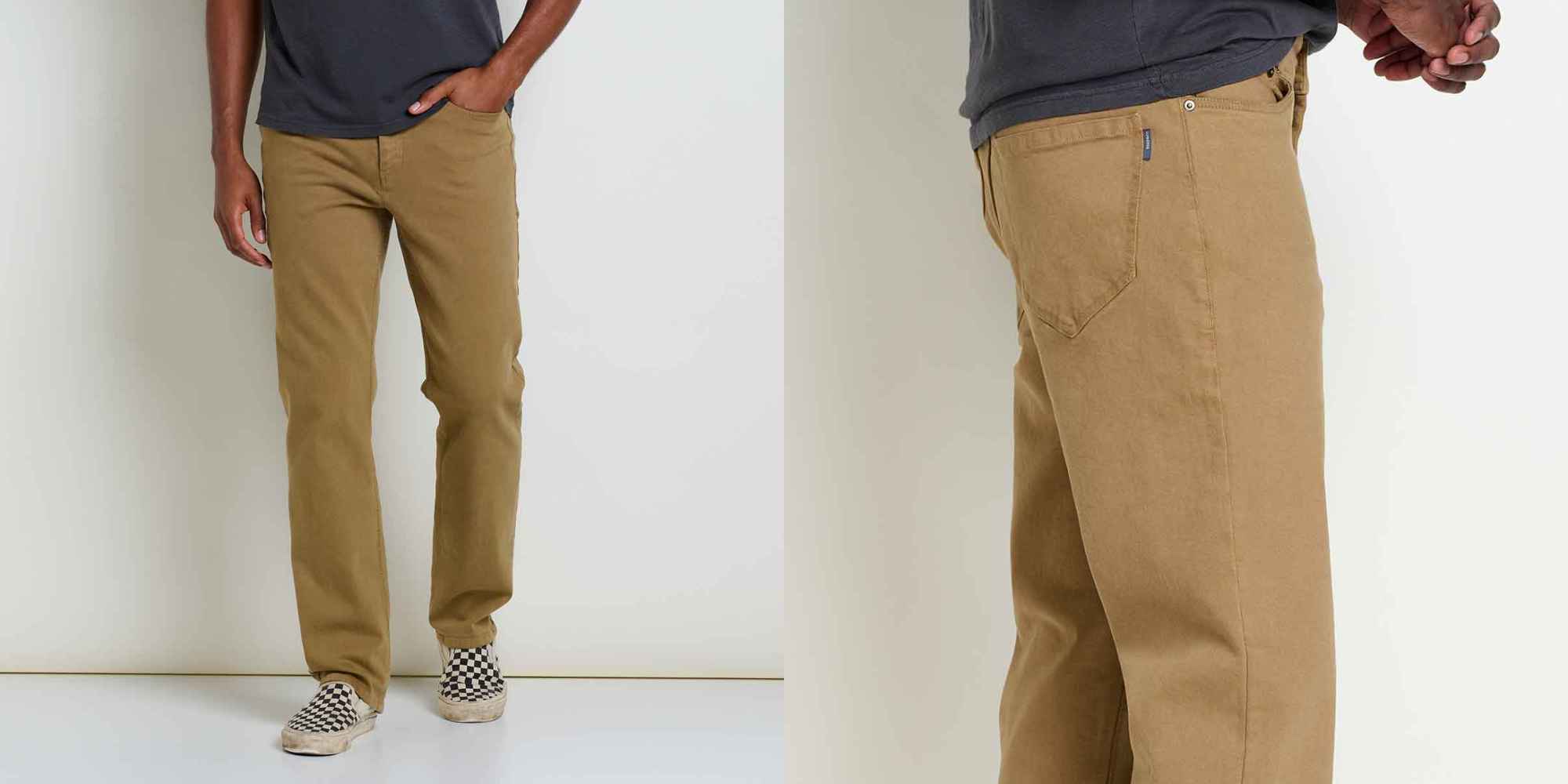
Like the women’s equivalent, these Balsam trousers have a touch of stretch and a comfortable ‘FlexForm’ waistband that mean they’re going to feel comfortable from the get-go—and you won’t need to worry about a belt, either.
Discover more of Toad&Co’s clothes.
The post How Toad&Co’s Clothes Help Everyone Enjoy the Outdoors appeared first on Good On You.
Green Living
50 DIY Christmas Presents Anyone Can Make
Last Updated on November 21, 2025
If you’re on the handmade Christmas kick this year, you’re not alone. So am I!
I’m choosing presence over presents this year and bringing back the 90s Christmas I loved as a kid – simple, crafty, low pressure, and full of small moments that feel meaningful.

If you want to gift thoughtfully, and without breaking the bank, these DIY Christmas presents are for you. There’s something for everyone on this list – whether you prefer easy or complex DIYs.
I’ve included all kinds of DIYs – beauty, cooking, fashion, and practical gifts alike. Best of all? Many of these tutorials are zero waste (or close to it).
what are good homemade Christmas gifts?
Good homemade Christmas gifts include consumable items, like homemade nut butters, vanilla extract, or jams. But not all homemade gifts are edible – you can also make items like bath bombs, candles, body scrubs, beeswax wraps, and so much more.
If you’re extra crafty, you could even make wooden gifts (like shelving or tablet holders), ceramic items (like mugs or jewelry), or knitted/crocheted pieces (like blankets, scarves or hats).
It all depends on your level of skill, time at your disposal, and ingredients/materials you have access to.
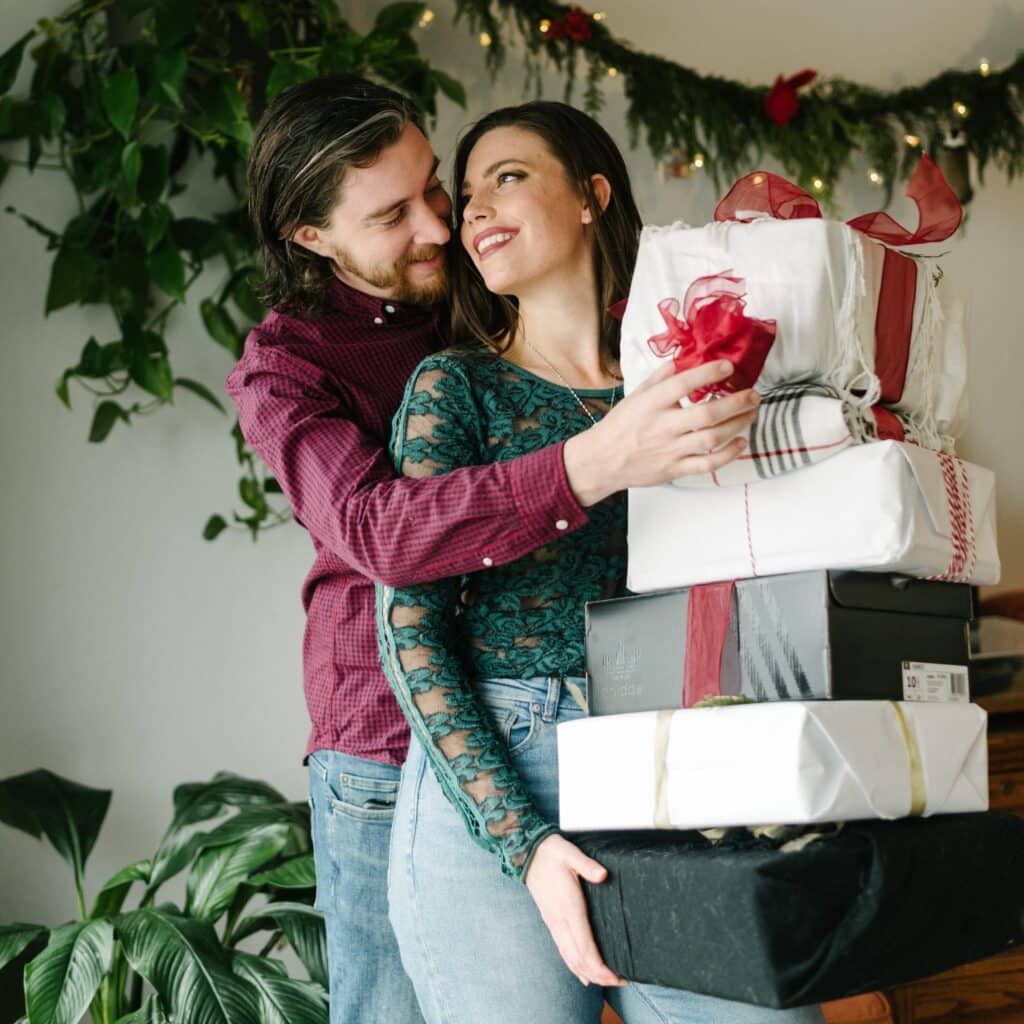
what are good inexpensive Christmas gifts?
Some good inexpensive Christmas gifts are DIY cornstarch ornaments, handmade body or lip scrub, seasoned salt blends, and homemade treats (like these chocolate chip cookies or vegan sugar cookies).
And never forget to hit up your local thrift store – you can find so many great items that would make affordable gift baskets!
Wrapping DIY Christmas gifts also doesn’t have to be expensive. Reusing gift bags and ribbons from last year, upcycling packaging paper, or even repurposing a scarf for furoshiki wrap are all low-waste and affordable!
RELATED: Gift Wrapping: How to Keep It Easy, Eco and Chic
how can I make a last minute gift?
You can make a last minute gift by getting crafty using the materials you have on hand!
For example, if you have a cardboard box, why not try making an upcycled cardboard dollhouse, vehicle, or pirate ship for a child? For adults, a DIY storage container or a shoe rack works.
One of my fav last minute gifts is scented bath salts in an upcycled glass jar – just a little Epsom salt and essential oil blends will do the trick!
Here’s my list of DIY Christmas gifts – something for everyone and every skill level.

- Bath salts
- DIY makeup like mascara/eyeliner, or lip to cheek
- Bath bombs
- Lip scrub
- Lip balm
- Face mask
- Body lotion
- Natural perfume
- Dry shampoo
- Shampoo bar
- Body soap
- Deodorant
- Rose water toner
- Hand-poured coconut/soy/beeswax candles
- Simmer pot in a jar
- Cookie, brownie, soup mix or hot cocoa mix in a jar
- Handmade seasoning blends
- Vanilla extract
- Vegan caramels or plant-based butter wrapped in compostable parchment paper
- Herb or citrus infused olive oil
- Peanut butter + jam
- Beeswax wraps
- Apple or pumpkin butter
- Sourdough or no-knead artisan bread
- Finished embroidery hoops
- Embroidered pillows, tote bags, clothes or cloth napkins
- Sewn cotton rounds
- Knitted scarf, hat, gloves, sweater, or blanket
- Hand warmers
- Quilt blanet, quilted coat or quilted wallet
- Tie dyed secondhand silk scarves, clothing or sheets
- Hand painted or drawn artwork
- Air dry clay paint palette
- DIY wooden frame for paintings or print photos
- Handmade ceramics (mugs, chawan, chasen holder, vase, spoon rest, etc.)
- Woodworked items (birdhouse, shelving, bookcase, wall guitar mount)
- Carving wooden bowls by hand
- Natural branch coasters
- Plant propagations in one of these DIY planters
- Seed balls using native seeds
- Handwoven baskets or bowls
- Macrame produce bag
- Macrame plant hanger
- Fabric paper mache bowls
- Upcycled paper earring jewelry
- Clay earrings
- Handmade plush toys
- Felt ‘food’ toys
- Wooden toys (like vehicles, blocks, or dollhouses)
- Knit or crocheted baby clothes
What do you think of these DIY Christmas presents? Let me know in the comments!
The post 50 DIY Christmas Presents Anyone Can Make appeared first on Going Zero Waste.
Green Living
8 Best Non Toxic Rugs For a Sustainable Home
Last Updated on November 6, 2025
Did you know most rugs are made from polyester, aka plastic? Arguably, a good chunk of our furniture and home decor is nowadays.
And lets not forget – rugs can get a lot of foot traffic. If it’s made from polyester, chances are those plastic fibers are going to shed and get onto us. Or worse, in us.

Some of the links in this post are affiliate links; for more information please see my disclosure policy.
Microplastics have been found in human feces, blood, and even placentas. And according to a study from Stanford University, those who had microplastics in their plaque had a higher risk of heart attack, stroke and death than those who didn’t.
On top of this, 5 billion pounds of rugs go to waste each year – that’s 2% of total US landfill. And if they’re made from plastic? They won’t biodegrade.
It’s more important than ever to reduce our exposure to microfibers where we can. Which is why I’ve rounded up the best non toxic rugs on the market.
what is the least toxic rug?
The least toxic rug will have sustainable materials and use no harsh chemicals (like PFAs) in their production.
Here’s what to look for when purchasing a non-toxic rug:
- Sustainable materials, such as organic cotton, jute, sisal or wool
- Low-waste packaging + delivery
- Natural, non-synthetic dyes
- Third-party certifications like OEKO-TEK, Fair Trade, GOTs
- Easy to spot-clean or machine wash
- Available in various styles, patterns + colors to suit your needs
do all rugs have PFAS?
According to Department of Toxic Substances Control (DTSC), only four samples of 201 carpets and rugs were found to contain more than 100 parts per million in their fibers, indicating PFAS were intentionally added to the products.
However, while PFAs may not be a huge concern for rugs, microplastic pollution is, specifically if your carpet is synthetic. Your best bet is to check the material your rug is made from and choose natural fibers whenever possible.
what is the best non-toxic rug for nursery?
The best non-toxic rug for a nursery would be made from natural materials like wool and organic cotton (which are soft on baby’s skin).
I recommend also checking for natural latex for the rug backing and underlay pads. Brands on this list that offer kid-friendly sizes and patterns include Lorena Canals, Nestig, Quince, and Loomy (more on each below).
what brand of rugs are non-toxic?
The brands of rugs that are non-toxic are listed below. I’ve gone ahead and highlighted some of my favorite features of each brand, but it isn’t an exhaustive list. Be sure to check out their websites for more information.

1. hook and loom
- Various rug sizes, shapes + patterns
- Made from GOTs certified organic cotton, recycled cotton + wool
- No dyes or harmful chemicals
- No latex
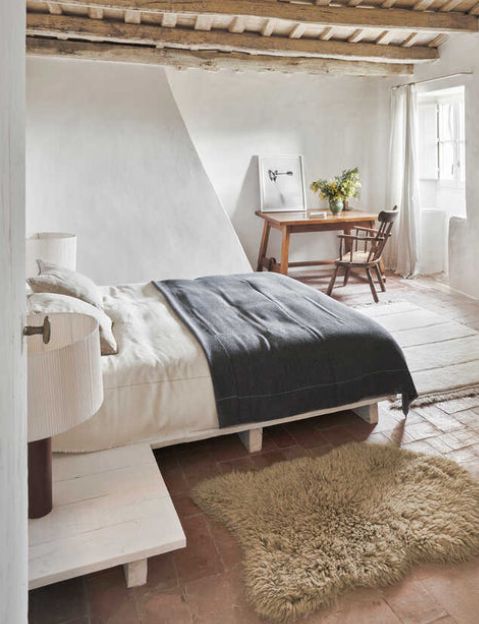
2. lorena canals
- Various rug sizes, shapes + patterns
- Handmade by artisans using recycled materials like organic cotton + wool
- Nontoxic dyes
- Make your own option
- Machine washable
- Rugcycled line made from recycled materials in their own factory
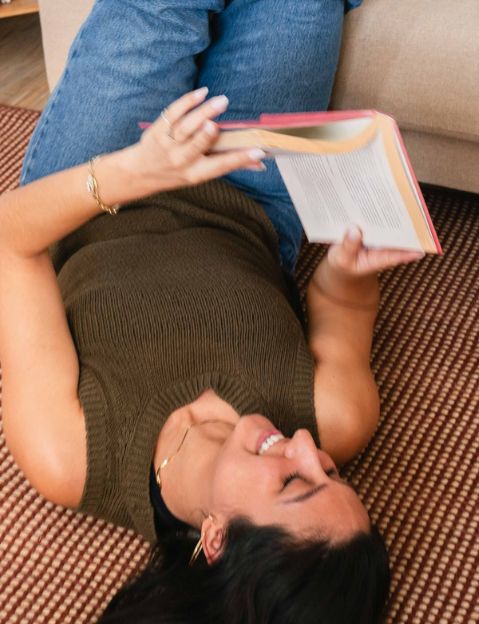
3. sabai
- Field rug
- Woven using wool + jute
- Available in 3 varying sizes
- Rug pad add-on available for reduced movement
- Certified B Corporation

4. quince
- Various sizes + patterns, best known for vintage-inspired looks
- Made from natural materials like wool, jute, + cotton
- Handcrafted by artisans in India
- Transparent pricing practices
- Compostable poly bags + recycled plastic mailers

5. west elm
- Rugs for every area of the home, in varying sizes
- Made from wool, jute, hemp, cotton, TENCEL + recycled materials
- Handspun by skilled artisans in India
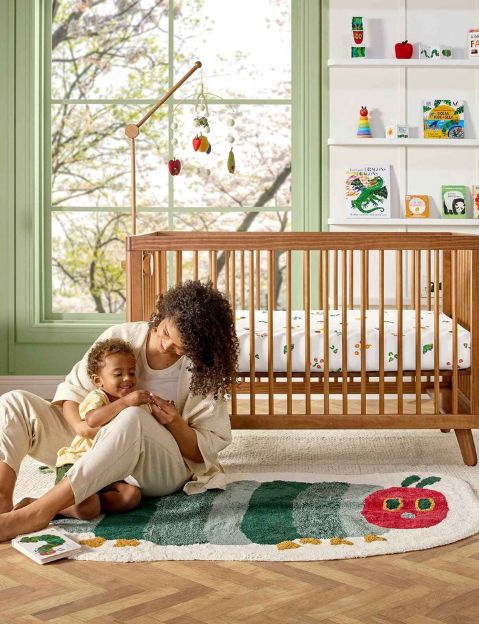
6. nestig
- Area + washable rugs made with fun shapes/designs for babies + kids
- Washable rugs made with organic cotton + nontoxic dyes
- Area rugs made with cotton + each colored element crafted from recycled cotton
- Handmade in Brazil

7. cold picnic
- Various rug shapes + sizes, abstract patterns + bold colors
- Made with wool, bamboo silk, cotton, hemp, + deadstock materials
- Designed in a Brooklyn studio, handmade by artisans in India
- Committed to reducing packaging waste where possible
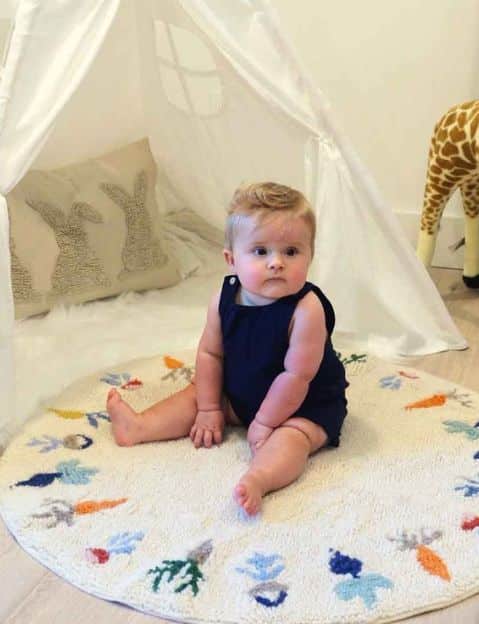
8. loomy
- Various rug sizes, shapes + patterns
- Made from banana silk, hemp, jute, recycled fiber, viscose, or wool
- Any colored yarn dyed using low-impact techniques
- Handcrafted by indigenous artisans
So what do you think of these non toxic, sustainable rugs? Let me know in the comments!
The post 8 Best Non Toxic Rugs For a Sustainable Home appeared first on Going Zero Waste.
-
Climate Change4 months ago
Guest post: Why China is still building new coal – and when it might stop
-
Greenhouse Gases4 months ago
Guest post: Why China is still building new coal – and when it might stop
-
Climate Change2 years ago
Spanish-language misinformation on renewable energy spreads online, report shows
-

 Greenhouse Gases2 years ago
Greenhouse Gases2 years ago嘉宾来稿:满足中国增长的用电需求 光伏加储能“比新建煤电更实惠”
-
Climate Change Videos2 years ago
The toxic gas flares fuelling Nigeria’s climate change – BBC News
-

 Climate Change2 years ago
Climate Change2 years ago嘉宾来稿:满足中国增长的用电需求 光伏加储能“比新建煤电更实惠”
-

 Carbon Footprint2 years ago
Carbon Footprint2 years agoUS SEC’s Climate Disclosure Rules Spur Renewed Interest in Carbon Credits
-
Climate Change2 years ago
Why airlines are perfect targets for anti-greenwashing legal action



